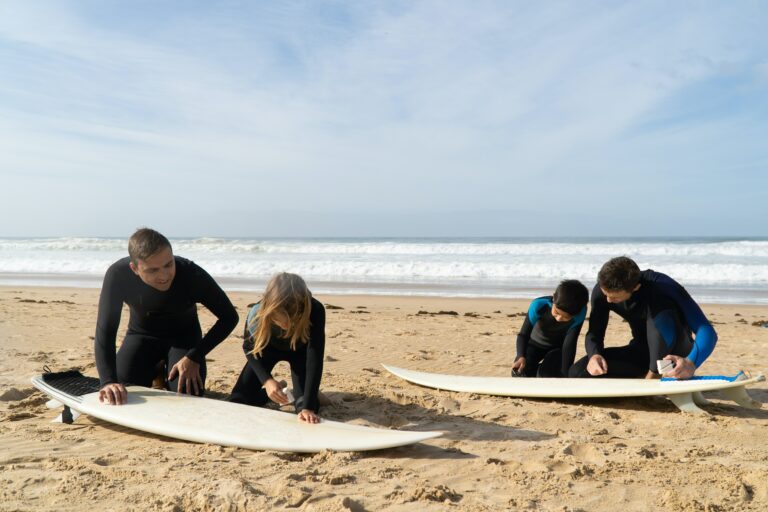Surfers make it look so easy. They just balance themselves on their board, affect a certain posture, and ride through the waves like a dolphin skimming the surface. But it only seems easy because they’ve spent years perfecting their craft. Many were born learning. They’re a part of an intergenerational culture that teaches their children to surf almost as soon as they learn how to walk.
Instruction does begin with balance and posture, but it’s much more extensive and time-consuming. There’s water safety, swimming, learning to read the waves, and etiquette. It can take a long time to get to the point where you can ride an actual wave, much less a big one. You have to train your muscles and your lungs and hone your instincts. There’s a way to breathe, a way to move–a way to live, and if you’re not trained properly and you don’t put in the practice, you’re bound to get hurt.
A few hours a day isn’t necessarily enough, not if you want to stay safe, and certainly not if you want to ride the best waves. Learning is a multi-tiered process. It should begin with an immersive introduction into the world of surfing, so you can begin to understand what the sport entails as well as the lifestyle and culture surrounding it. That’s why surf camp is so important.

What is Surf Camp?
When it comes to surf camp, San Diego doesn’t mess around. It’s a place to get away, set life aside, and study the sport of surfing. There you’ll be given in-depth instruction from experienced trainers. They won’t just help you learn how to surf. They train you to become a surfer.
Students first have to train their bodies, hone certain muscle groups, and strengthen their lungs. Learning to swim is also a huge part of surfing. Paddling out to the line-up is something that you have to work towards. Moving through the waves isn’t easy. So swimming lessons are essential.
In order to pop-up, or stand up on your board, you have to learn certain exercises that will build the muscles necessary to perform the technique seamlessly. It has to be done fast, and with very little effort. Surfers use these exercises throughout their lifetime in order to keep those muscles strong.
Surfers also have to learn how to stay underwater for longer periods of time. The waves have a way of keeping us down, and in order to survive those conditions we have to be able to utilize oxygen properly and maintain the right state of mind.
All of this requires dedication, long hours, and practice. It’s not necessarily something that can be done with hour-long sessions after work or school. That’s why students take time out of their lives to focus on learning.
The Types of Surf Camps Available
Wouldn’t it be wonderful if you could just cancel life, forget all of your obligations, and spend your time at the beach? For many, that is the dream, and in an ideal world that is how everyone would learn how to surf. But it’s not always possible. Surf camp is the next best thing. It’s designed to immerse both beginner and intermediate students in surf culture and training without encroaching too much on their schedules.
For any serious endeavor, it’s better to start young when the mind is fresh. Kid’s Day Camp is for 7-17 year-old beginner and intermediate students. You can choose between 3 days in the morning, 5 days in the morning, or 5 full days. Classes last between 3-6 hours, depending upon the package you choose.
Prices are affordable, and parents won’t have to purchase expensive equipment. Everything is provided. That includes surfboard, leash, wetsuit, and UV protection rash guard. This significantly reduces potential costs, and it makes things quite a bit easier.
The classes are taught by licensed, certified surf instructors with CPR and lifeguard CRT training. They keep things safe, simple, and under control. They never handle more than four students at a time, so there’s very little risk, and instruction is personalized.
This program is perfect for beginners who want to pursue the sport later in life, and it can help intermediate students move past their learning plateau and feel more comfortable in the water. It’s also a great prelude for further instruction down the line.
If you’re not sure whether surf camp in San Diego is right for you or your child, San Diego Surf Lessons offers free trial lessons. They’re Monday-Wednesday from 3-4 pm. Potential students will try their hand in the sea and get a taste of what they can expect from their instructors. We have one of the best surf camps San Diego has to offer, so you’re sure to love what you see.

Surf N’ Stay is a retreat built for outsiders who normally wouldn’t have a chance to receive training in a surf camp in San Diego. It’s centered around both instruction and recreation. Students will stay at the beachside Blue Sea Beach Hotel in Pacific Beach, close to shopping, nightlife, and killer restaurants. They’ll receive daily 90-minute lessons–long enough that they’ll be standing up by the time the trip is over, but short enough that they’ll have enough time to explore the area. They’ll also have stand-up paddleboard instructions, where they will learn balance and have a chance to build upper body strength. The retreat also offers yoga, a massage parlor, a spa, and bike rentals.
Surf N’ Stay camp in San Diego is more of a taste of what’s to come. Students will learn how to balance themselves and pop-up, but they’ll be riding foam, not waves. It’s better to use this in conjunction with more in-depth training if you’re serious about becoming a surfer.
It’s a great staycation for locals who might be looking for something more long-term. You’ll have a chance to see what surfing and surf lessons are like, so you can decide whether or not you’d like to work with San Diego Surf Lessons after the retreat is over.





